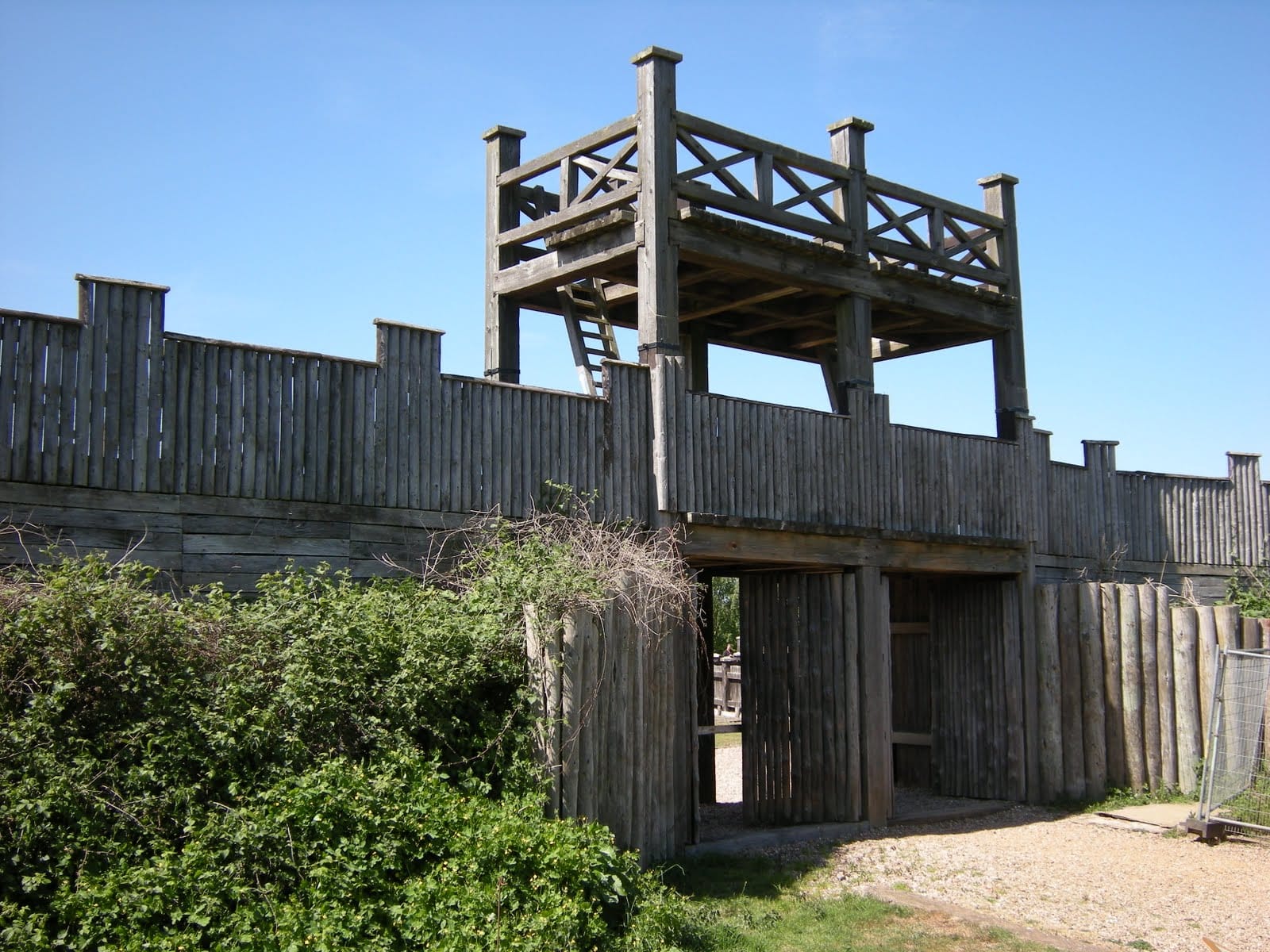Journey back to Roman Britain and discover the fascinating Lunt Roman Fort near Coventry! This remarkably well-preserved site offers a unique glimpse into Roman life and military strategy on the edge of their empire. From its unusual design and the sole surviving Roman *gyrus* (horse training area) to its potential connection to Boudica’s rebellion, Lunt’s story unfolds with every discovery. Explore the fort’s compelling history, its unique architectural features, and the ongoing archaeological research that continues to reveal its secrets.
Lunt Roman Fort: A Frontier Outpost
Imagine the year 60 AD. At a vital crossroads where two major Roman roads—the Fosse Way and Watling Street—converged near modern-day Coventry, stood Lunt Roman Fort. This wasn’t a typical Roman fort; its irregular shape and predominantly timber and turf construction suggest a rapid and perhaps temporary build. Some experts believe its unique design was a direct response to the tumultuous period following Boudica’s rebellion. This unconventional approach likely prioritized speed of construction over standardized layouts seen in other, more permanent Roman settlements. The fort’s main gate, meticulously reconstructed using Roman-era techniques, stands as a testament to modern archaeological skill.
A Rapid Response to Rebellion
The construction of Lunt Roman Fort, likely around AD 60-61, directly correlates with the aftermath of Boudica’s rebellion. Its strategic location, at the intersection of two major Roman roads, made it ideal for both controlling movement and efficiently supplying troops involved in suppressing the revolt. Some historians theorize that Lunt functioned as a command center and logistics base for Roman forces during this crucial period. The fort’s relatively short lifespan (approximately 20 years, c. AD 60-80) further supports the hypothesis that it was a strategically placed temporary facility. Further research might illuminate a more nuanced relationship between Lunt and Boudica’s rebellion and the events that followed.
The Unique Gyrus: A Glimpse into Roman Cavalry Training
Lunt Roman Fort’s most remarkable feature is its gyrus, a circular horse training area. This unique structure, the only one of its kind surviving from the Roman Empire, offers unparalleled insight into Roman cavalry training. Imagine highly skilled soldiers rigorously training their mounts—a crucial aspect of the Roman army’s effectiveness. The gyrus’s design and construction likely required specialized expertise and suggests sophisticated training methods, providing invaluable insights into Roman military practices that would otherwise be unknown.
Daily Life at Lunt: Soldiers, Supplies, and Strategy
Daily life for the soldiers stationed at Lunt probably involved training, drills, maintaining the fort, and managing the challenges of frontier life. The impact of Boudica’s rebellion most likely influenced their routines significantly. Ongoing research may yet reveal how this turbulent period affected daily life within the fort, perhaps even contributing to its relatively short occupation. The artifacts discovered, though perhaps less abundant than at larger sites, still paint a compelling picture of the people who lived and worked at Lunt and their daily interactions.
Archaeological Discoveries: Unraveling Lunt’s Secrets
Archaeological excavations at Lunt, beginning in the 1930s and ongoing, have yielded a wealth of information about Roman military life at the frontier, building techniques and the fort’s operational logistics. While the number of discovered artifacts might appear less significant when compared to larger Roman sites, the findings at Lunt offer vital contextual information, reinforcing its strategic importance as a key outpost and training center. The questions surrounding Lunt’s activities still largely remain: what other amazing discoveries lie buried beneath the site, waiting to be found?
Unanswered Questions and Ongoing Research
The allure of Lunt Roman Fort stems from a unique blend of factors: its unusual design, its remarkably short lifespan—only about 20 years—its proximity to the upheavals surrounding Boudica’s rebellion, and most notably, its one-of-a-kind gyrus. These elements act as a compelling catalyst for ongoing research. Some experts believe that further investigation could reveal additional details about the fort’s construction, its precise duration of occupation, as well as the broader context within Roman Britain’s military history. There’s likely much more to uncover at this captivating site. We might even uncover more precise details about the fort, including its original Roman name.
Visiting Lunt Roman Fort: A Journey Through Time
Planning a visit? Lunt Roman Fort offers a truly unique historical experience. Consult the official website for up-to-date information on opening times, ticket prices, and accessibility. The site regularly hosts educational programs, making it an engaging destination for families and school groups alike. Discover the unique history of this important Roman frontier outpost for yourself.
Lunt Roman Fort: A Summary Table
| Feature | Description | Significance |
|---|---|---|
| Shape | Irregular, unlike typical Roman forts | Suggests rapid construction and possibly a temporary or reactive nature. |
| Construction | Primarily timber and turf. | Reflects the speed of Roman expansion in this period and likely resource constraints. |
| Occupation | Approximately 20 years (c. AD 60-80) | Relatively short compared to other Roman forts, likely influenced by political instability. |
| Gyrus | Unique circular horse training area, the only one known in the Roman Empire. | Provides unparalleled insights into Roman cavalry training and military life. |
| Location | Strategic crossroads of Roman roads near modern-day Coventry. | Highlighted its importance for controlling trade and military movements, especially during and after Boudica’s rebellion. |
| Artifacts | While not abundant, the existing finds offer valuable contextual information. | Supports the understanding of the fort’s role and daily life within. |
[https://www.lolaapp.com/harewood-castle-yorkshire] [https://www.lolaapp.com/hosok-tere-budapest-hungary]
- Discover Long Black Pepper: Flavor & Health Benefits - April 25, 2025
- Shocking Twists: The Grownup Review: Unreliable Narration - April 25, 2025
- A Quiet Place Book vs Movie: A Deep Dive - April 25, 2025
















